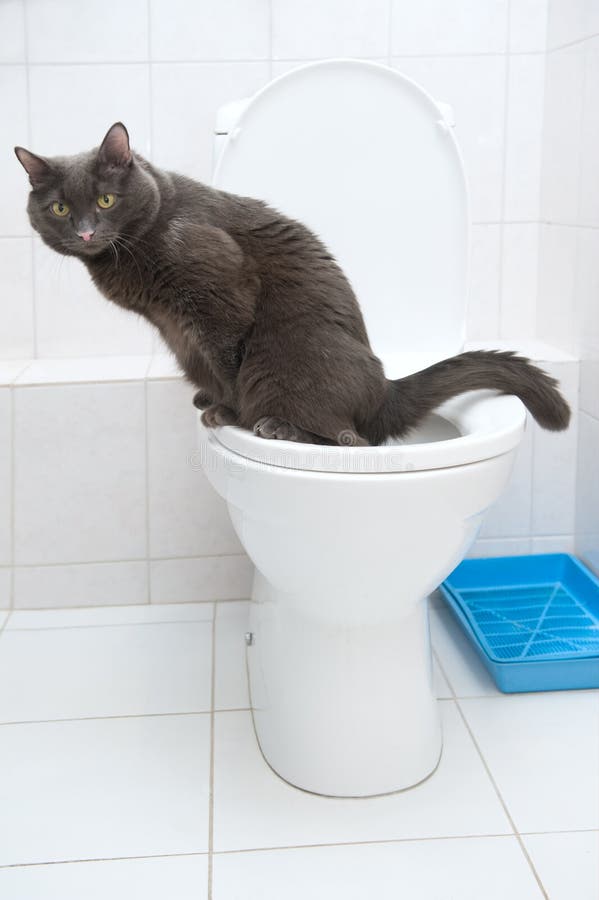Reasons Flushing Cat Poop Down Your Toilet Is Bad - Suggestions for Correct Disposal
Reasons Flushing Cat Poop Down Your Toilet Is Bad - Suggestions for Correct Disposal
Blog Article
Do you find yourself searching for answers on Don’t flush cat feces down the toilet?

Intro
As pet cat proprietors, it's important to be mindful of how we take care of our feline friends' waste. While it might seem practical to purge feline poop down the commode, this practice can have damaging consequences for both the atmosphere and human wellness.
Alternatives to Flushing
Thankfully, there are more secure and more responsible methods to take care of cat poop. Think about the adhering to choices:
1. Scoop and Dispose in Trash
The most common technique of throwing away pet cat poop is to scoop it right into a biodegradable bag and throw it in the trash. Be sure to use a dedicated litter scoop and deal with the waste quickly.
2. Use Biodegradable Litter
Opt for eco-friendly pet cat clutter made from materials such as corn or wheat. These litters are environmentally friendly and can be securely taken care of in the garbage.
3. Bury in the Yard
If you have a yard, take into consideration burying cat waste in a marked area away from veggie gardens and water resources. Make sure to dig deep enough to stop contamination of groundwater.
4. Set Up a Pet Waste Disposal System
Buy a pet dog waste disposal system especially made for cat waste. These systems use enzymes to break down the waste, lowering smell and environmental impact.
Wellness Risks
Along with environmental concerns, purging feline waste can also present health and wellness risks to people. Cat feces might include Toxoplasma gondii, a bloodsucker that can cause toxoplasmosis-- a possibly severe health problem, particularly for expecting females and individuals with damaged immune systems.
Environmental Impact
Purging pet cat poop introduces dangerous pathogens and parasites right into the water supply, posing a significant risk to aquatic communities. These pollutants can negatively impact aquatic life and concession water top quality.
Final thought
Accountable animal ownership expands past supplying food and shelter-- it also entails appropriate waste management. By avoiding flushing cat poop down the bathroom and choosing different disposal techniques, we can minimize our ecological footprint and secure human health.
Why Can’t I Flush Cat Poop?
It Spreads a Parasite
Cats are frequently infected with a parasite called toxoplasma gondii. The parasite causes an infection called toxoplasmosis. It is usually harmless to cats. The parasite only uses cat poop as a host for its eggs. Otherwise, the cat’s immune system usually keeps the infection at low enough levels to maintain its own health. But it does not stop the develop of eggs. These eggs are tiny and surprisingly tough. They may survive for a year before they begin to grow. But that’s the problem.
Our wastewater system is not designed to deal with toxoplasmosis eggs. Instead, most eggs will flush from your toilet into sewers and wastewater management plants. After the sewage is treated for many other harmful things in it, it is typically released into local rivers, lakes, or oceans. Here, the toxoplasmosis eggs can find new hosts, including starfish, crabs, otters, and many other wildlife. For many, this is a significant risk to their health. Toxoplasmosis can also end up infecting water sources that are important for agriculture, which means our deer, pigs, and sheep can get infected too.
Is There Risk to Humans?
There can be a risk to human life from flushing cat poop down the toilet. If you do so, the parasites from your cat’s poop can end up in shellfish, game animals, or livestock. If this meat is then served raw or undercooked, the people who eat it can get sick.
In fact, according to the CDC, 40 million people in the United States are infected with toxoplasma gondii. They get it from exposure to infected seafood, or from some kind of cat poop contamination, like drinking from a stream that is contaminated or touching anything that has come into contact with cat poop. That includes just cleaning a cat litter box.
Most people who get infected with these parasites will not develop any symptoms. However, for pregnant women or for those with compromised immune systems, the parasite can cause severe health problems.
How to Handle Cat Poop
The best way to handle cat poop is actually to clean the box more often. The eggs that the parasite sheds will not become active until one to five days after the cat poops. That means that if you clean daily, you’re much less likely to come into direct contact with infectious eggs.
That said, always dispose of cat poop in the garbage and not down the toilet. Wash your hands before and after you clean the litter box, and bring the bag of poop right outside to your garbage bins.
https://trenchlesssolutionsusa.com/why-cant-i-flush-cat-poop/

We had been guided to that report on Don’t flush cat feces down the toilet through an associate on another site. Liked our blog? Please share it. Let another person locate it. Thanks for your time. Visit again soon.
Click Here Report this page